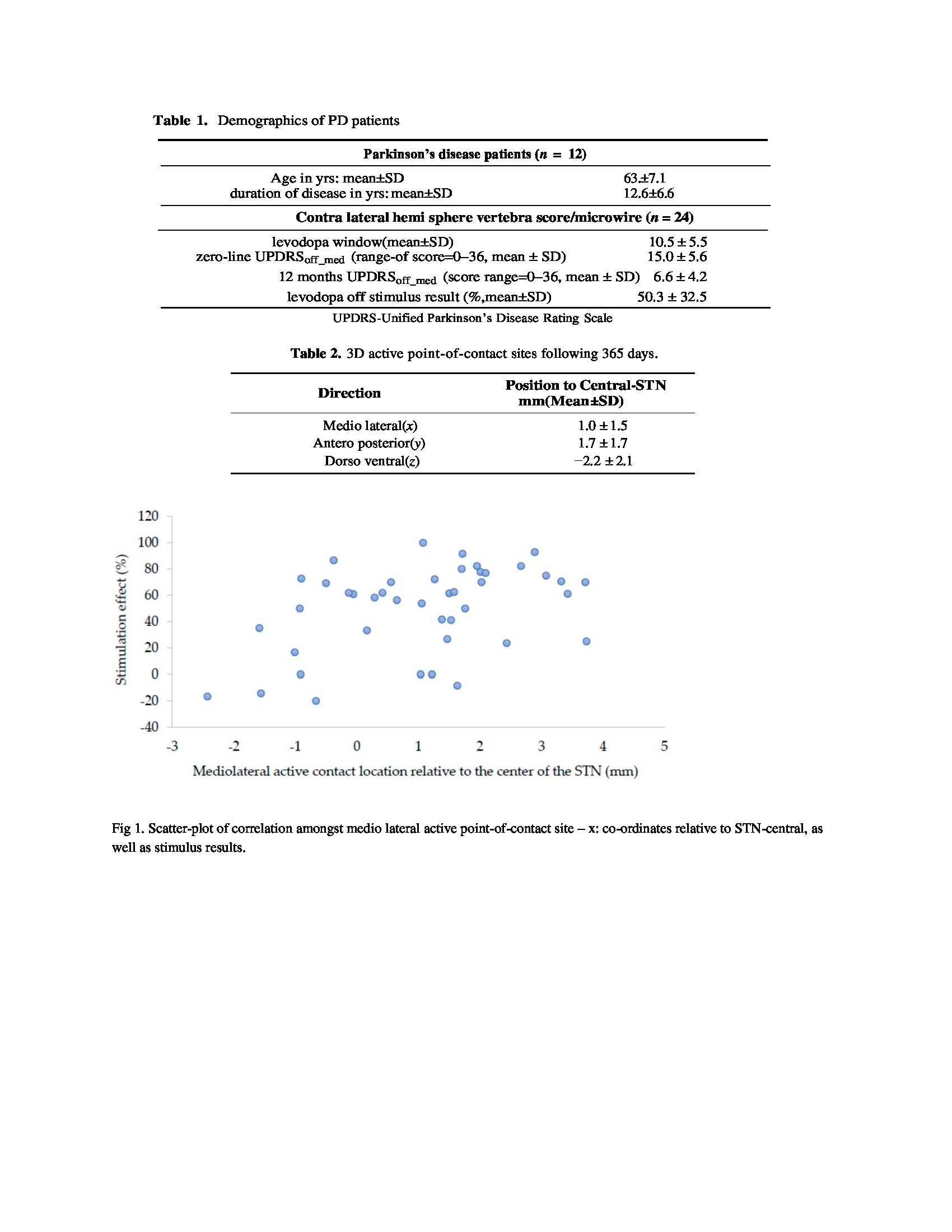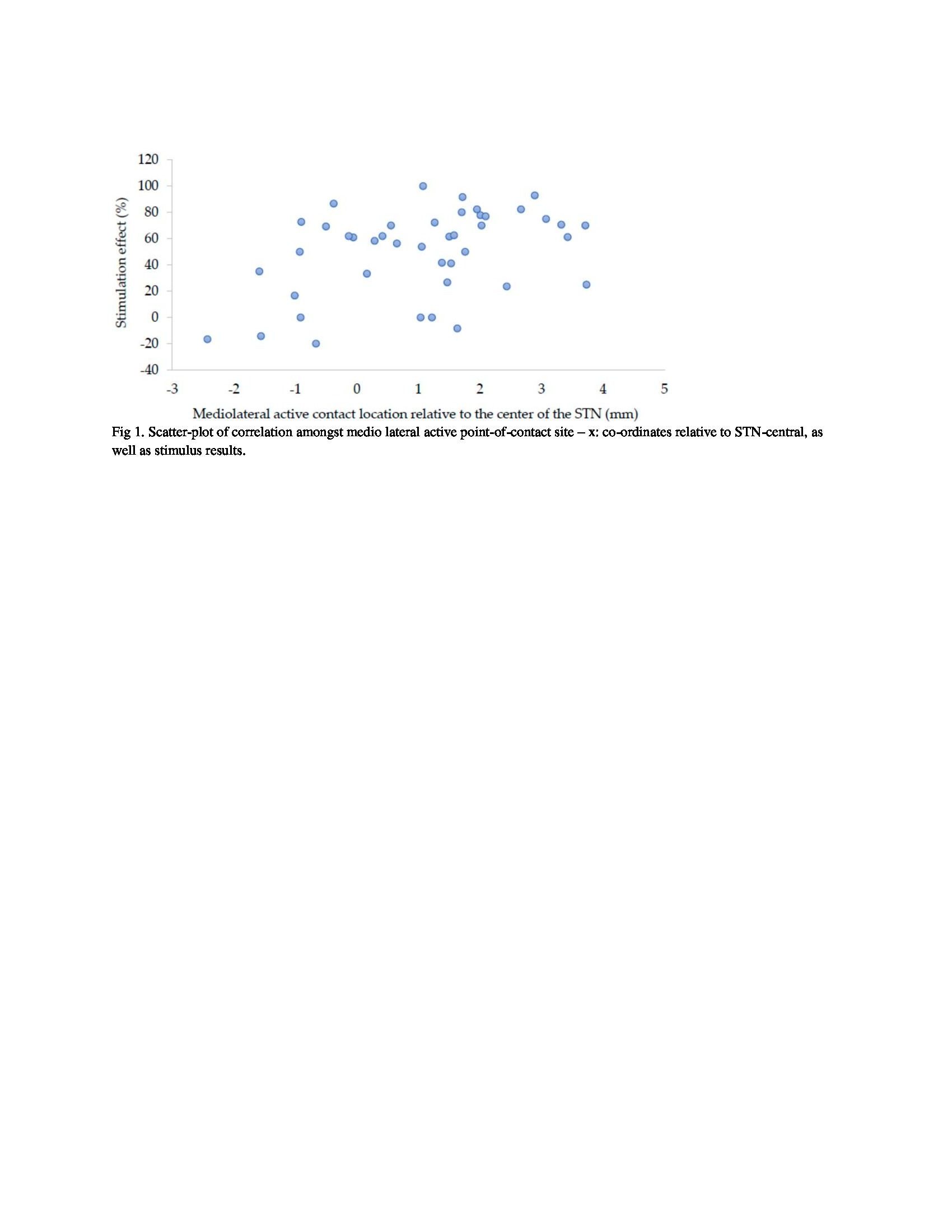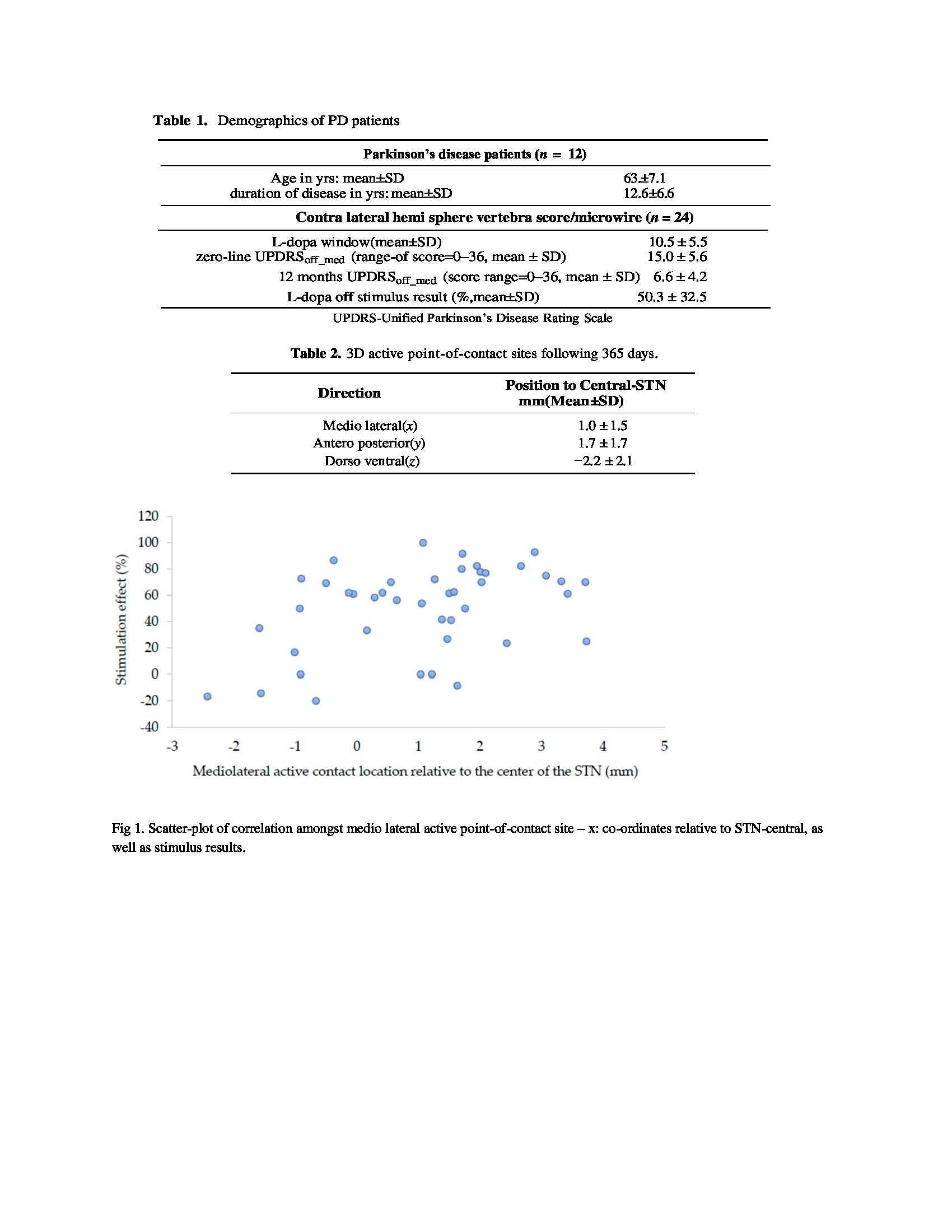Category: Parkinson's Disease: Pathophysiology
Objective: To inquiry into the correlation between progression and active point of contact site expects an adjustment for functional (anatomical-structural) variation.
Background: Within the Parkinson patients, there exists dissimilar electro neurophysiological patterns (signatures). Equally, following STN-DBS, progression (reduction of tremor and other cardinal motor symptoms) does vary among the patients.
Method:
This study discovered the correlation among active point-of-contact places relative to the neurophysiological STN, predicted through intra op micro electrode recording based STN nucleus, plus contra lateral motoric progress after. The basic sub-nuclei structure was transformed to fit onto the stereo tactically defined MER points (for accurate STN sites). The position of 24 microwire led-points (12 patients, bilateral STN; Table 1), i.e., microelectrodes derived from MRI-CT merged images extracted relative to thr patient definite STN based on MER signal patterns (signatures). With the help of regression technique, the correlation linking contact point and motoric progression was observed.
Results: The prototype model regression which estimates motor restoration progress based on L-dopa influence substantially progressed by enhancing 12 months (365 days) active contact coordinate points, R2 magnitude variation=0.18, p=0.001, statistically significant, Fig 1. Whereas in merged prototype, altered magnitude variation R2=0.47, p ≤0.001, the largest contribution was made by the medio lateral location of the active contact, the standardized beta=0.490, p=0.002. So, based on STN-MER as a reference, we got meaningful correlation between active point-of-contact site plus motor-progress.
Conclusion:
The MER with STN-DBS model prototype can be applied to execute and run the perfectly set-up application of deep brain stimulators in Parkinson disease.
Table 1 and Fig 1. Scatter-plot of correlation
Fig 1.Scatter-plot of correlation – active PoC
Table and scatter plot
References: Rens Verhagen, et.al., Electrode Location in a Microelectrode Recording-Based Model of the Subthalamic Nucleus Can Predict Motor Improvement After Deep Brain Stimulation for Parkinson’s Disease, Brain sciences, vol.9, no.51,Pp:,1-11, 2019.
To cite this abstract in AMA style:
V. Rama Raju. Effectiveness of Lead-Point in Parkinson`s Model of STN-MER with DBS: A Study of Predicting Motor progression [abstract]. Mov Disord. 2024; 39 (suppl 1). https://www.mdsabstracts.org/abstract/effectiveness-of-lead-point-in-parkinsons-model-of-stn-mer-with-dbs-a-study-of-predicting-motor-progression/. Accessed December 29, 2025.« Back to 2024 International Congress
MDS Abstracts - https://www.mdsabstracts.org/abstract/effectiveness-of-lead-point-in-parkinsons-model-of-stn-mer-with-dbs-a-study-of-predicting-motor-progression/



